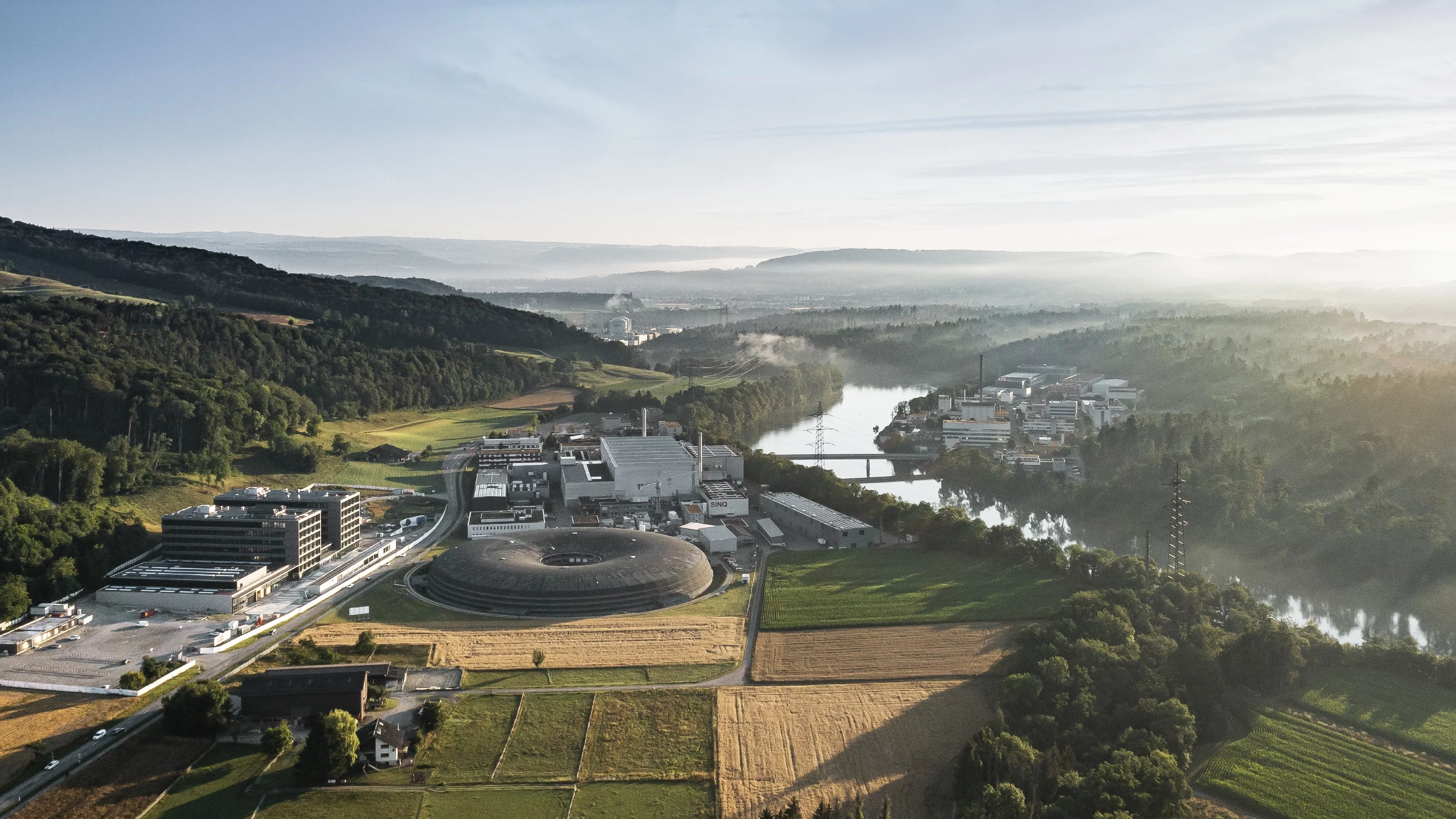The Swiss Light Source SLS at PSI will shut down temporarily as part of a major upgrade project. It will come back online in 2025, ready to supply even more powerful synchrotron light than ever for innovative scientific experiments.
At 8 a.m. on the morning of Saturday 30 September, the Swiss Light Source SLS, one of PSI’s five large research facilities, will be shut down. It will remain out of operation for research purposes for over a year while the facility undergoes a comprehensive modernisation programme: the SLS 2.0 upgrade project.
The SLS is Switzerland’s only research facility using synchrotron light. It supplies highly concentrated X-ray light for scientific experiments in many fields, such as physics, materials science, chemistry, biology and medicine. Since it first came into service in 2001, some 22,500 experiments have been performed at the SLS. In addition, external researchers have visited the SLS to conduct scientific experiments around 53,000 times in these 22 years.
The purpose of the current upgrade is to make the high-calibre facility fit to address the scientific challenges of future decades. The upgrade will greatly increase the density of the X-ray light: the beam will be even brighter and collimated stronger. This will allow more samples to be examined at the SLS over the same amount of time or to get more scientific data over the same period. In many cases, performance will improve by up to a factor of 40. In addition, researchers will be able to visualise larger areas of a sample. In other experiments, the resolution of the images will be increased, so that in future it will be possible to investigate even smaller structures, for example in the nanoscale.
Research into systems for the energy transition
The upgrade will mainly affect the 288-metre-long electron storage ring. A new vacuum tube will be fitted, along with around one thousand new, complex magnets that will hold the electrons with high precision on a then improved circular path. As the electrons are accelerated to almost the speed of light they release a special type of X-ray light, or synchrotron radiation. This is used for scientific research at around twenty beam lines around the ring.
Several new beamlines will also be set up as part of the upgrade, including the future Debye beamline. Here, researchers will be able to study materials and systems, such as catalysers and batteries, that can contribute towards the energy transition, not only with extreme precision, but under realistic operating conditions.
Other experimental stations at SLS are ideal for investigating the electronic or magnetic properties of materials that could be useful for the next generation of electronic devices, or for making non-destructive 3D recordings with a resolution of just a few nanometres. Yet other beamlines are used to examine proteins, the building blocks of life, whose precise knowledge helps to develop new medical agents.
“A prominent visual landmark and extremely successful”
Hans Braun is project leader for the SLS 2.0 upgrade. “The SLS is not only a prominent visual landmark, but also an extremely successful PSI facility which is now being completely remodelled. This will allow us to remain competitive at the forefront of science.”
The upgrade is not just technically extremely challenging and complex, but is also subject to great time pressure, Braun explains: “During the current core phase of the upgrade, research at the facility has to pause. Therefore, we have planned everything in such a way as to keep this time as short as possible.”
“Dark Time” until January 2025
Research on the beamlines already ceased on Monday 25 September. The electron accelerator facility and the associated electron storage ring continued to run for a few days for test purposes. When the accelerator is switched off now, the SLS will enter what is called the “Dark Time”.
This period will last only 15 months: the electron accelerator facility will be restarted as early as January 2025. From then on, the beam lines will also gradually resume operation. The first scientific experiments are planned for August 2025. By 2026, scientific operations should be fully re-established.
“Swiss and international researchers from both academia and industry use the SLS and appreciate its value. After the upgrade they will have access to an even more powerful experimental facility,” says PSI Director Christian Rüegg. “Furthermore, our PSI researchers will use the “Dark Time” to full effect to upgrade the experimental stations to a technical level that meets the future parameters of the SLS.” Even if experiments have to stop for a while – science doesn't take a break.
Contact
Dr. Hans-Heinrich Braun
SLS 2.0 Project Head
+41 56 310 32 41
hans.braun@psi.ch
[German, English, French]
Further information
About PSI
The Paul Scherrer Institute PSI develops, builds and operates large, complex research facilities and makes them available to the national and international research community. The institute's own key research priorities are in the fields of future technologies, energy and climate, health innovation and fundamentals of nature. PSI is committed to the training of future generations. Therefore about one quarter of our staff are post-docs, post-graduates or apprentices. Altogether PSI employs 2300 people, thus being the largest research institute in Switzerland. The annual budget amounts to approximately CHF 450 million. PSI is part of the ETH Domain, with the other members being the two Swiss Federal Institutes of Technology, ETH Zurich and EPFL Lausanne, as well as Eawag (Swiss Federal Institute of Aquatic Science and Technology), Empa (Swiss Federal Laboratories for Materials Science and Technology) and WSL (Swiss Federal Institute for Forest, Snow and Landscape Research). (Last updated in June 2025)

